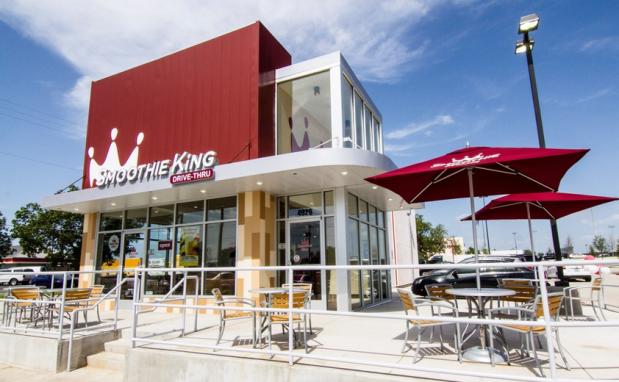
As restaurants use their rewards programs to drive digital engagement, Smoothie King is looking to loyalty partnerships down the line to reach new audiences, while noting that the wrong kinds of partnerships could do more harm than good.
In an interview with PYMNTS, Smoothie King Chief Marketing Officer Marianne Radley said the success of cross-brand loyalty partnerships hinges on their ability to stay within each brand’s ethos.
“There are some [loyalty partnerships] that make natural sense, that live [in] the same lane — for us, health and wellness, fitness,” Radley said. “People would naturally say, ‘They’re tying in with a Lululemon or a Planet Fitness or something along those lines. That makes a lot of sense for Smoothie King. What I’m seeing across other brands … is [some] are pushing against other categories that [aren’t so obvious], that may be a little bit more disruptive.”
Radley said for Smoothie King, which has more than 1,350 locations around the world, cross-brand loyalty points sharing is something that the restaurant is “building into the back half” of 2024.
Overall, more restaurant brands are turning to rewards partnerships. Fast-casual chains under the WOWorks banner, for instance, partnered with gaming company ATLAS:EARTH earlier this year to offer in-game currency for restaurant purchases. Similarly, last year, IHOP kicked off a partnership with Xbox to make gaming rewards available to the restaurant brand’s loyalty members.
Also last year, Starbucks debuted a partnership with Delta, and the coffeehouse chain plans to add more partners going forward.
Radley sees restaurants’ cross-brand rewards efforts as being primarily focused on other lifestyle categories.
“There’s a lot of crossing the lines with health and beauty … and wellness [and] music, and tying all those in and seeing those cross-shared points of loyalties and bringing those … guests in,” Radley said.
Overall, about half of all consumers now engage with restaurant loyalty programs. According to the PYMNTS Intelligence study “Connected Dining: Consumers Like the Taste of Discount Meals,” based on a February survey of more than 1,800 U.S. consumers, 51% reported using a restaurant loyalty program, with 49% participating in these programs at quick-service restaurants (QSRs) and 34% at full-service restaurants (FSRs).
Looking ahead more generally to digital trends in fast-casual in the coming year, Radley noted that key areas to watch include artificial intelligence and personalization, and how these capabilities contribute to the evolution of loyalty programs.
Digital engagement with restaurants has certainly taken off. The PYMNTS Intelligence report “Consumer Interest in an Everyday App,” created in collaboration with PayPal, revealed that 1 in 4 restaurant customers each month exclusively orders food via connected devices, and another 36% do so both via connected devices and traditional channels.
Radley noted that digital ordering has become table stakes, and the race now is to develop the most intelligent customer acquisition and retention capabilities.
“I think restaurants are finally catching up to what retail has done,” Radley said. “So, when you look at how the pandemic has really forced restaurants — whether it’s quick-serve, fast-casual — to adopt digital or get left behind, you’re seeing, of course, AI, but personalization [and] the evolution of loyalty programs, and how you really make those more personalized and customized. How do we go beyond the transaction to build that loyalty and lifetime value?”